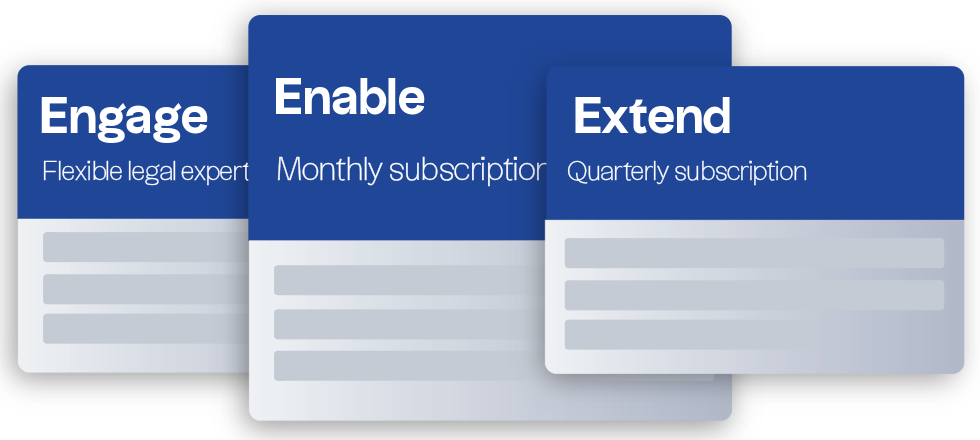AI is rapidly transforming the way businesses create content, from coming up with new brand names and marketing slogans to designing logos and more. But as exciting as these opportunities are, using generative AI can also expose your business to the risk of trade mark infringement, sometimes without you even realising it.
In this article, we explain how AI-generated content can impact your brand, the potential risks of trade mark disputes, and the steps you can take to protect your business.
If you have questions about using AI in your branding, our trade mark solicitors can help. We provide clear, practical advice on protecting your trade marks, reviewing your creative processes, and minimising the risk of trade mark infringement claims.
Contents:
- How is your business using generative AI?
- Can AI generated brand names, slogans, or logos be registered as trade marks?
- What are the trade mark infringement risks from using AI generated content?
- What steps can you take to limit the risk of trade mark infringement?
- What should you do if you have been accused of trade mark infringement?
- Can I be liable personally for trade mark infringement?
- How to resolve a trade mark infringement dispute
- Summary
How is your business using generative AI?
You will need to identify where GenAI is being used in your business and by whom. Many businesses are already using generative AI tools (like ChatGPT and Midjourney) to help with content creation and design, for example, in the creation of brand names, logos, slogans, advertising and marketing content. You should understand which of your employees are making use of GenAI tools and to what extent. For example:
- Do you use chatbots to respond to customer queries and requests for information?
- Do you use AI tools to collect and analyse data such as customer reviews and feedback, social media responses, sales figures or competitor information?
- Do you employ AI algorithms to provide tailored marketing and advertisements and personalised ad targeting?
- Do you use AI tools for streamlining and automating organisational tasks such as accounting, invoice processing or inventory management?
- Do your employees use AI to create content and text for your website or social media?
In addition, your external marketing or design agencies may also use generative AI when working on your brand assets or campaigns.
Can AI generated brand names, slogans, or logos be registered as trade marks?
There is nothing to prevent AI generated words, images and slogans from being registered as trade marks, provided that the trade mark is distinctive, not simply descriptive in respect of your business’s goods and services and does not contain offensive or misleading content, then it should pass the Examination process for trade mark registration applications.
This is not to say that such trade marks will definitely be registrable. There is no guarantee that a trade mark generated by GenAI will not infringe the rights of other brand owners or create a mark that is not already in use by another business. You could face an opposition to your trade mark application if your Ai generated trade mark is too similar to a prior registered or unregistered trade mark.
What are the trade mark infringement risks from using AI generated content?
It is no defence to a trade mark infringement or passing off action to say that the trade mark was created by GenAI. Using or registering a trade mark that resembles a third party’s branding brings with it the risk of receiving a claim for infringement or ‘passing off’ of their registered or unregistered trade mark. It is important that you do not rely solely on AI to create your brand without incorporating additional cross-checks and processes to evaluate the risk associated with the AI-generated brand name or logo.
If you are using AI for naming or logo creation, you should have a process to check whether those names or designs are already in use or registered by other businesses. You will need to conduct a trade mark clearance search, which involve searching the Registers and generating a list of similar, prior registered marks. Such clearance searches can themselves be carried out using specialist tools, in combination with analysis and advice from IP professionals.
Since GenAI tools utilise a vast amount of data to generate their content, and it is not possible to know where the data being accessed has come from, it is conceivable that AI tools can unintentionally plagiarise existing trade marks, even from lesser-known brands. AI tools can use the same underlying images or content many times in different combinations to create new pictures or logo. This means that different users could end up unknowingly using AI-generated images or logos that bear some similarity to each other, if they entered similar prompts.
Logos that have been generated by AI could also entail additional risk, for example, if the AI tool has been trained on unlicensed photographs or third party images that are protected by copyright, trade marks or design rights. Various court cases are being litigated at present on the question of whether AI-generated images would constitute a ‘derivative work’ under IP law, which the original copyright owner would need to authorise the creation of.
What steps can you take to limit the risk of trade mark infringement?
There are various steps that you can take to limit your business’s risks in utilising GenAI tools to create content and branding.
It is highly recommended that you conduct trade mark clearance searches before you use and seek to register AI-generated brand names or logos in your business. Any AI-generated content used in your business, such as advertising and marketing literature, website content and images, could also infringe a third party’s IP rights, such as copyright, design rights or trade marks. Copyright infringement occurs when a third party uses the whole or a substantial part of a copyright protected work without permission. You should ensure that any AI-generated content is double-checked by a human and/or a GenAI tool that is trained in highlighting duplicate content before being publicised;
You should check your marketing and branding agency contracts and update these if necessary to cover the use of AI when creating materials for your business and who is to be liable in the event of an infringement or passing off claim being brought against you based on such content.
Often it is a good idea to introduce an AI policy business-wide to manage how your business will use AI and document such use. This is important for establishing and checking ownership of any IP rights, but also supports wider issues such as data protection, privacy, accountability and responsibility.
Staff training and guidance in the safe and ethical use of GenAI can help prevent legal, reputational, and operational risks and should include specific software training and support. You should also make sure that any AI software tools that your business uses are trustworthy and up-to-date and incorporate sufficient data privacy and security protections.
What should you do if you have been accused of trade mark infringement?
If your business is accused of trade mark infringement, you will face concerns over reputation damage, financial costs, and the potential disruption to operations. If a competitor claims that your AI-generated name or logo infringes their rights, you will need to act quickly to work out whether they have a legitimate claim and what steps you need to take to protect your interests and prevent and further infringements.
You will first need to check how the allegedly-infringing content was created and by whom. If it is wholly AI-generated, can you find out what original work it was based on and how much of this was incorporated into the finished output? You will also need to find out what IP rights the claimant is basing their claim on and whether you have any evidence to show that such rights still exist and are indeed owned by the claimant. You can ask them for evidence to substantiate their rights, such as copies of any original photographs or images along with dated proof of their creation.
If you think that you commenced use of your name, logo or content before the claimant started to use their name or logo in business or first publicised their copyright-protected work, then you may have a defence or even be able to counter-claim for infringement or passing off of your IP rights. You should keep records or when any IP assets in use by your business were created and when and where they have been used.
Can I be liable personally for trade mark infringement?
Limited liability means that the directors and employees of a company will not normally be personally liable for its offences or debts. Sole traders will not be able to benefit from this corporate ‘shield’ and will be personally liable for all debts and obligations of the business.
Trade mark infringement brings with it the possibility of “accessory liability” which means that an individual officer or employee can be held liable if they knew or "turned a blind eye" to the infringement and actively participated in or benefited from it. This makes it even more important to be able to show that you have been diligent in implementing policies and procedures to limit the risk of infringement, as far as possible.
How to resolve a trade mark infringement dispute
The first step is often to reach out to the claimant and put forward an offer for settlement. This could involve offering to change aspects of your brand or content, entering into a co-existence agreement or negotiating a licence to be able to continue using the infringing content as it stands or subject to certain conditions. Your lawyer should be able to assist you in any negotiations and prepare the requisite contractual documentation.
If negotiations fail, you will then need to assess whether you have a strong enough case and sufficient funds available to be able to defend against the claim. If not, it may be simpler and cheaper to agree to cease all use of the infringing content and start over again.
Summary
The world of AI generated content is a complicated one that is still developing and one which brings with it a vast backdrop of legal, ethical and practical implications, which are concurrently still being debated and litigated.
Each relevant party will need to take their share of responsibility for any risks in relation to the development, implementation and use of GenAI tools and content. There are steps that you can take to make sure that you are protected as far as possible when using GenAI in your business. If you employ sufficient precautions, then GenAI can be highly advantageous and give your business a competitive edge. Used unwisely, you could end up incurring losses that far outweigh any potential benefits, if you are faced with an infringement action and/or end up having to re-brand and pay costs and damages to a third party. The legal uncertainty can be overwhelming, especially for smaller companies, where the risk of personal liability is also a possibility.

